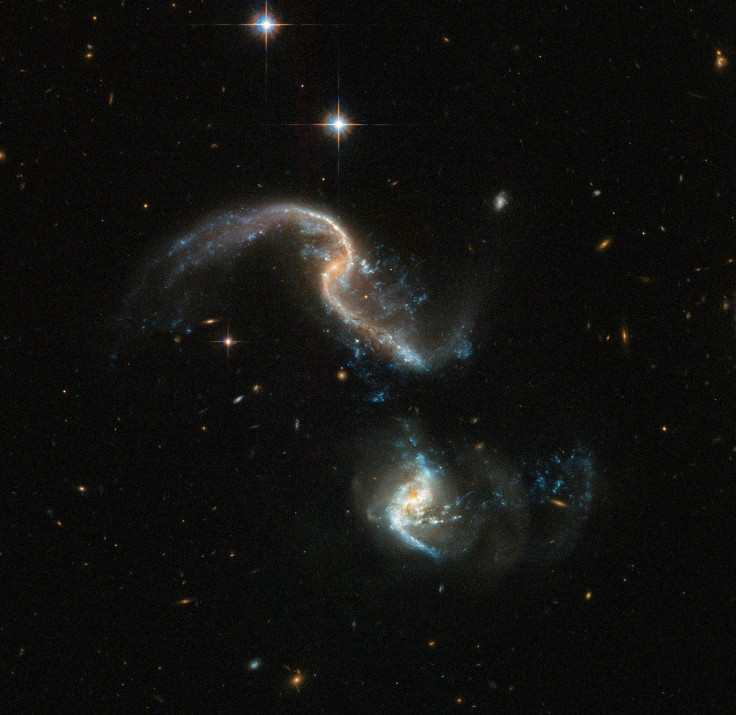Hubble Captures Distant Spiral Galaxies Colliding Into Each Other

Scientists using the Hubble Space Telescope have captured a distant pair of barred spiral galaxies merging into each other.
Collectively dubbed Arp 256, the two galaxies are located some 350 million light-years away from Earth in constellation Cetus and have started moving toward each other for a humongous cosmic collision.
The image, taken by Hubble’s Advanced Camera for Surveys and Wide Field Camera 3, shows the two galaxies in a spectacular cosmic face-off. Usually, interacting galaxies connect with a bridge of gas and dust, but in this case, the merger has just begun and there is no visible link in between. There is also a massive distance between the nuclei of the two galaxies.
While both members of the galactic pair appear distorted, the one on the top features long, extended arms of gas, dust, and stars, and appears bigger than other. They both will move closer to each other over next millions of years and finally merge into one big galaxy.
Apart from this, viewers can also see massive star-forming regions or stellar nurseries highlighted in a blue-ish tint. These are the places where gravitational forces interact and churn out hot baby stars from gas and dust.
Arp 256 was spotted some 52 years ago by Halton Arp and is one of the 338 nearby weirdly-shaped galaxies indexed in the catalog "Atlas of Peculiar Galaxies." It was created to understand the different stages of galactic evolution in the universe and includes a number of dwarf, active, as well as interacting galaxies.
In 2008, Hubble scientists were able to photograph the galactic merger for the first time, which ultimately led to this much improved and detailed image.
However, it is worth noting mergers like these are not totally uncommon. These extremely powerful events play a crucial part in the evolution of the universe. In fact, our own galaxy, the Milky Way, is on track to merge with neighboring Andromeda in about 4 billion years.
The Hubble space telescope has been in operation for about 28 years and is still doing an excellent job at producing some of the finest details of the universe. However, with James Webb Space Telescope launching next year, we can expect even more beautiful shots from the depths of the cosmos.
© Copyright IBTimes 2024. All rights reserved.





















